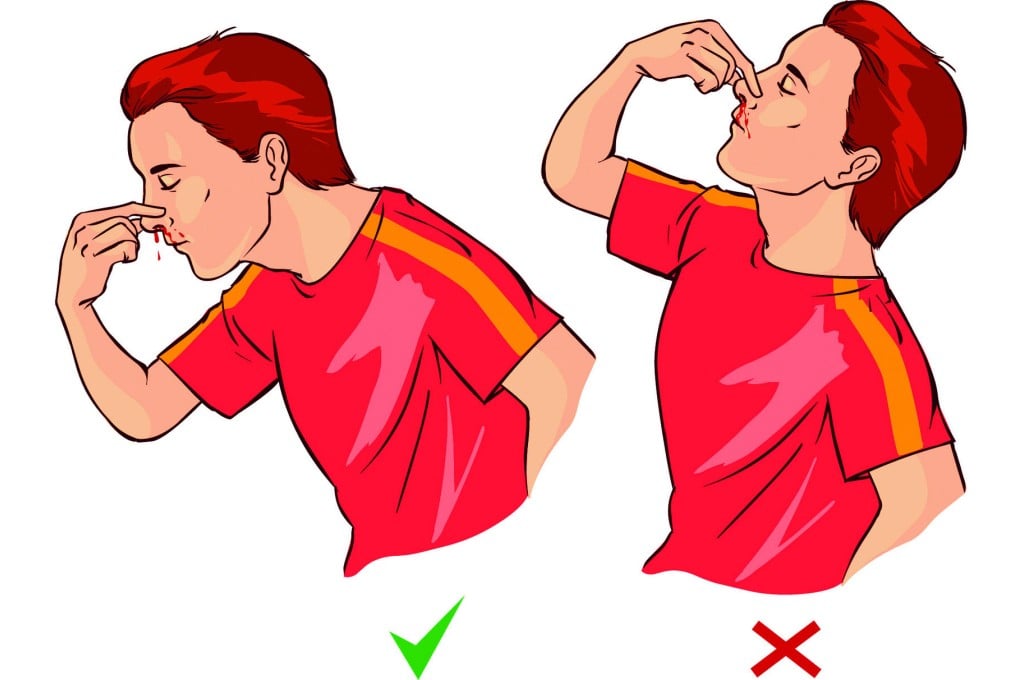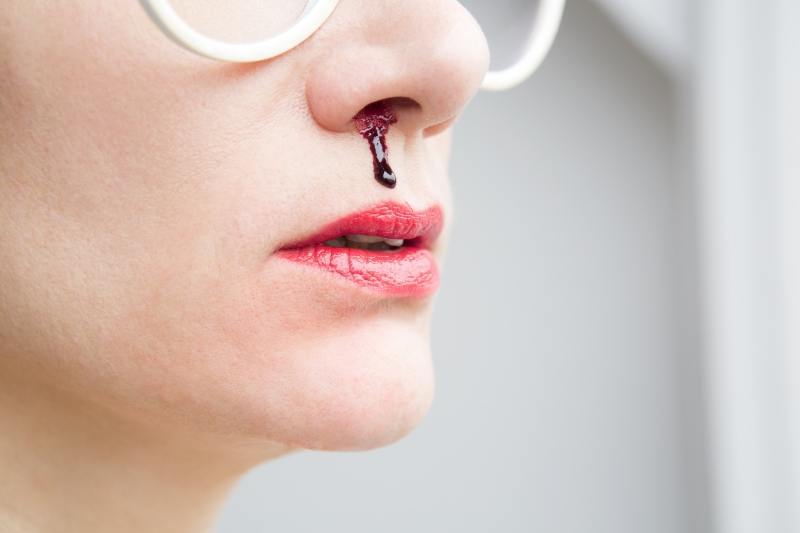A nosebleed, medically known as epistaxis, can be a startling and messy experience. While it may seem alarming, most nosebleeds are not serious and can be managed effectively at home with the right first aid for nosebleeds. Knowing the proper steps is crucial, as common myths, such as tilting your head back, can be dangerous.
This detailed guide provides you with a clear, step-by-step instruction on how to stop a nosebleed safely and effectively, along with information on causes and when to seek medical help.
The Step-by-Step Guide to Stopping a Nosebleed
This is the most important part of first aid for a bloody nose. Follow these instructions in the correct order to ensure the best outcome.
Step 1: Stay Calm and Sit Down
The first and most important action is to remain calm. Panicking can increase your heart rate and blood pressure, which will only make the bleeding worse. Find a chair and sit down immediately.
Step 2: Lean Forward, Not Back!
This is a critical instruction to remember. Instead of tilting your head back, which is a common but dangerous mistake, you must lean slightly forward. Tilting your head back can cause blood to drain down your throat, potentially leading to choking, stomach irritation, and vomiting. Leaning forward allows the blood to flow out of the nose, making it easier to manage.

Step 3: Pinch Your Nose
Using your thumb and index finger, firmly pinch the soft part of your nose, just below the bony bridge. This is where the majority of nosebleeds occur. Make sure you are pinching the fleshy part, not the bone. This applies direct pressure to the blood vessels, helping to form a clot and stop the bleeding.
Step 4: Breathe Through Your Mouth
While you are pinching your nose, breathe steadily through your mouth. This ensures you can still get enough air.
Step 5: Hold for 10 to 15 Minutes
Pinch your nose continuously for a full 10 to 15 minutes without releasing the pressure. It's a common mistake to check if the bleeding has stopped after only a minute or two. Releasing the pressure too early can disrupt the clot that is forming and cause the bleeding to restart. Use a clock or timer to ensure you hold for the full duration.
Step 6: Apply a Cold Compress (Optional)
While pinching your nose, you can also place a cold compress, such as a bag of ice or a cold washcloth, on the bridge of your nose or the back of your neck. The cold can help constrict the blood vessels and reduce blood flow, assisting the clotting process.

Step 7: Check and Repeat if Necessary
After 15 minutes, slowly release the pressure on your nose. If the bleeding has stopped, you can continue with post-nosebleed care. If it continues, repeat the pinching process for another 10 to 15 minutes. If the bleeding does not stop after a total of 20 minutes of continuous pressure, it's time to seek medical attention.
After a Nosebleed: Post-Care Tips
Once the bleeding has stopped, it's important to take a few precautions to prevent it from starting again.
- Avoid Strenuous Activity: For the next 24 hours, avoid heavy lifting, bending down, or any other activity that might raise your heart rate and blood pressure.
- Don't Blow Your Nose: Do not blow your nose for several hours after the bleeding has stopped. This can dislodge the newly formed clot and cause the bleeding to restart.
- Keep Your Head Elevated: Try to keep your head higher than your heart for a few hours.
Common Causes of Nosebleeds
Understanding the causes of nosebleeds can help with prevention. The most common cause is dry air, which can irritate and dry out the nasal membranes, making them more susceptible to bleeding. Other causes include:
- Nose picking
- Minor injuries or trauma to the nose
- Colds, allergies, or sinus infections
- Certain medications, such as blood thinners (aspirin, warfarin)
- High blood pressure
- Chemical irritants
- Foreign objects in the nose
When to Seek Medical Help for a Nosebleed.
While most nosebleeds are manageable, there are times when they may indicate a more serious issue. You should seek immediate medical attention if:
- The bleeding does not stop after 20 minutes of continuous pressure.
- The bleeding is very heavy or rapid.
- You are having difficulty breathing.
- You feel faint, dizzy, or weak.
- The nosebleed started after a head injury, fall, or other trauma.
- You have frequent or recurrent nosebleeds.
- You are taking blood-thinning medications.
Prevention Tips
To reduce the likelihood of getting a nosebleed, consider these preventative measures:
Use a humidifier in your home, especially during dry seasons or at night.
Use a saline nasal spray to keep the nasal passages moist.
Avoid picking your nose.
Trim your fingernails to prevent injury from accidental scratching.
If allergies are a cause, treat them with an antihistamine or other recommended medication.
By following these simple and effective steps for nosebleed treatment, you can feel confident in your ability to handle this common occurrence and provide proper first aid for yourself or others.
share with

Mesha M. Founder
"Explore a world of inspiration and empowerment at RealtimeArticles. Dive into our curated articles for insights, reflection, and shared growth. Join our community on a journey of discovery and evolution!"





Comments
Coming Soon!
POST YOUR COMMENTS